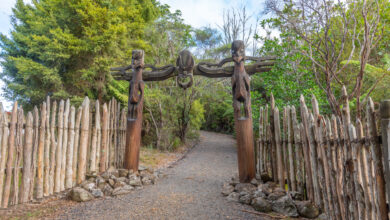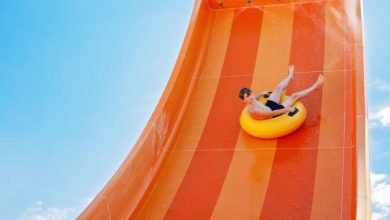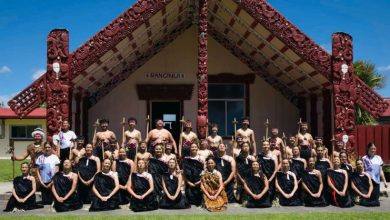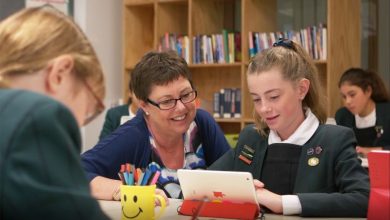Internationally influential NZ educator dies
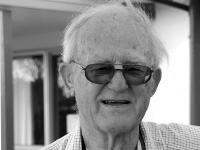
 New Zealand educator, Elwyn Stuart Richardson, died in December. This abridged tribute to him was published in Leading and Learning.
New Zealand educator, Elwyn Stuart Richardson, died in December. This abridged tribute to him was published in Leading and Learning.
Elwyn Richardson was best known for his book In the Early World, a record of the development of his educational philosophy while working at a small country school in Northland from 1949 to 1962.
On the strength of his early work, the school was granted ‘experimental status’ by then Director of Education, Clarence Beeby – a special consideration that allowed Richardson to develop his own teaching methods and curriculum.
From 1969 -1972 Richardson worked at American universities as a visiting lecturer. He is considered a significant figure in New Zealand education because of his own work and educational writings and the critical impact of his educational philosophy internationally.
Richardson was born in Auckland in 1925 and educated at Dilworth School, Mt Albert Grammar School and the University of Auckland where he completed a Bachelor of Science degree. In 1946 he applied to Auckland College of Education and spent his probationary teaching year at Puni School near Pukekohe. He applied for the remote country position at Oruaiti School in 1949, largely because of its distinct fauna of sea life, but also because the sole-charge posting offered him the opportunity to work out his own ideas about teaching and learning alone.
Developmental approach
Elwyn Richardson’s educational philosophy was based on the belief that all real learning must be anchored in personal experience. It was this conviction that provided the foundation for his developmental approach to education. Central to this was his theory of integration, a personalised process whereby children moved from one expressive medium to another, between all subject areas. Richardson’s theory of integration was informed by his conception of artistic ability as a universal human attribute, his well-developed ideas about the nature of artistic development in children and a firm belief in the learning potential of every child.
Richardson viewed himself first and foremost as a scientist. At Oruaiti School he discarded the official syllabus and turned to the children’s lives and immediate environment for the basis of his curriculum. Using the children’s natural curiosity and interest, Richardson taught them how to observe closely the world around them and to record their new discoveries and their own responses to these. From here, he developed a school programme that was anchored in the children’s surroundings and real lives. Through environmental study, the children learned the basis of scientific method and brought these skills to bear on studies that spanned all subjects. His method was a revolt away from science as a separate subject to an integrated programme of arts and science.
‘The Oruaiti Experiment’ as it became known, was approved, on the understanding that Richardson would write a yearly report and a serious document at the conclusion of the experiment. In The Early World published by The New Zealand Council for Educational Research in 1964, was the product of this. The book tells the story of how Richardson’s students became increasingly aware of their own capacity for personal expression while collectively establishing a shared understanding of aesthetic values.
International reputation
The book was well received by the New Zealand educational establishment and widely taken up as a text by teacher training colleges in New Zealand in the 1960s and 1970s. Joseph Featherstone, former professor of education emeritus at Michigan State University, reviewed the book for the New Republic magazine and stated: “It may be the best book about teaching ever written.”
Following Featherstone’s review, Pantheon Books published a Canadian and an American edition simultaneously in 1969. The books were praised by international reviewers such as Jonathan Kozol in the The New York Times Book Review and British writer and musician R. W. B. Lewis who wrote: “Not only does this book point to a new direction in education, its very existence is a landmark in the recognition of human potential and dignity.”
Over the next decade Richardson and his school became an international symbol of progressive education in New Zealand with a particular focus on arts and crafts. His book was used in teacher education programmes in the United States, particularly in the area of developing reading and writing skills in young children. A third edition with a new foreword and a twenty page appendix of children’s art work was published by NZCER in June 2012. The book is also available as an eBook.
Richardson’s work at Oruaiti was followed by a brief period lecturing in English at Auckland College of Education from 1961-2. He then spent two years as principal at Hay Park School in Auckland, followed by 18 years as principal of Lincoln Heights School from 1966 to 1969 and 1972-1987. The publication of In The Early World led to an invitation from the University of Colorado in 1969 to work as a visiting lecturer.
Over the next three years Richardson divided his time between the University of Colorado in Boulder, Bank Street College of Education in New York, the University of Illinois at Urbana-Champaign, the University of Washington in Seattle, and South Dakota State University (SDSU) in Brookings. As part of this work, under the auspices of SDSU, he worked with students and faculty from Oglala Lakota College to enhance visual and performing arts in schools on the Native American Pine Ridge Reservation. After his service during these years, Richardson was nominated for an honorary doctorate degree from SDSU for his service and leadership in education in 2001.
Richardson returned to New Zealand in 1972 and resumed his position as principal of Lincoln Heights School until retiring in 1987 at 62 years of age. He continued to write books on education and scientific papers, which he largely produced in limited editions by hand in his Taupaki printery.
In the 1989 Queen’s Birthday Honours, Elwyn Richardson was made a Companion of the Queen’s Service Order for services to education.



